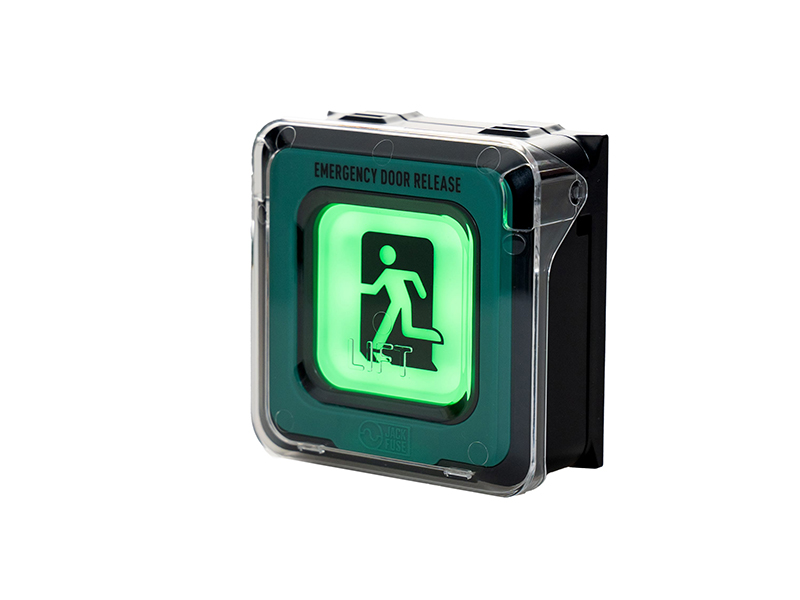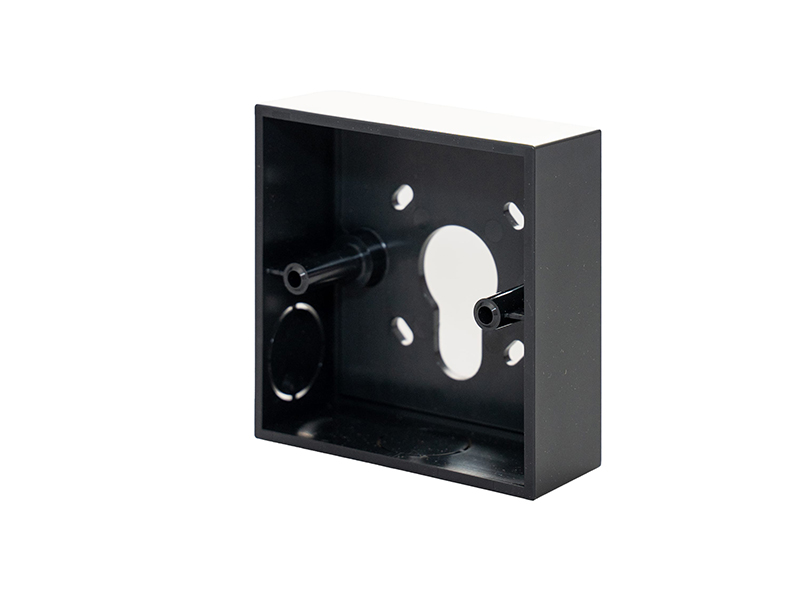products
APPLICATION NOTES
Electronic Break Glass – EBG
- Automatic Reset
- Remote Reset
- Local Reset
The Jack Fuse Electronic Break Glass represents a significant advancement in security technology, offering remote and automatic reset capabilities. For the first time, the need to attend and perform a manual reset has been eliminated, along with associated costs.
The new reset modes, combined with audible and visual feedback, substantially enhance security by reducing the time doors are left unlocked unnecessarily, as well as discouraging nuisance activations.
APPLICATIONS
- Emergency door release
- Electric locks, auto doors and gates
- New installations and retrofits
- Remote facilities
- High-security sites
- Managed and unmanaged buildings
FEATURES
- Automatic, remote and local reset
- Lift-up activation guard
- Case and wall tamper switch
- Back-lit status indication
- Activation sounder
- Adjustable brightness/volume
- Local override switch
- Two 3A relay contacts
- Standard break glass footprint/mounting options for simple retrofit
The first automatically and remotely resettable break glass
The Jack Fuse Electronic Break Glass emergency door release represents a significant advancement in security technology, offering remote and/or automatic reset capabilities. For the first time, the need to attend site to perform a manual reset has been eliminated, along with associated costs.
The new reset modes combined with audible and visual feedback enhance facility security by reducing the time doors are unlocked unnecessarily and discouraging nuisance activations.
Reset Modes
Automatic reset is achieved by using the door lock power to energise the EBG. Reset occurs the next time the lock power is cycled. This may be when a card or exit button is used or an access schedule changes, for example at the end of business hours.
Remote reset uses a dedicated control voltage which can be shared between all EBG units in a facility. This voltage can be switched by a button, key switch, or system relay to allow operator override.
Local reset can be either via the concealed reset button, or when in automatic mode by cycling lock power (card read or exit button.) A local override switch can be used to keep the door unlocked during service or repair works. The local override option can be disabled.
Reset options can be combined to allow remote, automatic and local reset of the same EBG. High security facilities may choose to implement system logic to check the EBG status and automatically reset after a set period or at a specific time of day.
Retrofitting & Upgrades
Upgrading to the Electronic Break Glass is a simple task. The EBG features the same footprint and mounting hole pattern as most legacy manual reset break glass units.
No new cables are required when using the existing lock power to energise the EBG.
Tamper Switch
In a first for break glass units the EBG features a built in tamper output that monitors for both the case being opened and the base being removed from the wall.
Frequently Asked Questions (FAQ)
Q: Does the EBG comply with the BCA?
A: Yes, when mounted in accordance with DDA requirements for exit devices.
Break glass units used for emergency door release are not referenced in the BCA.
The BCA requires that doors along an exit path allow free egress in the event of a fire. For electronically locked doors, this is
typically achieved through an automatic interface between the building’s Fire Indicator Panel (FIP) and the electronic access control system. Jack Fuse Power Port modules are specifically designed to facilitate this interface, commonly
known as a fire trip.
Break glass units do not eliminate the requirement for a fire trip interface. Instead, they serve as an optional backup or as a means to facilitate exit in non-fire emergency scenarios.
An example of when a break glass unit is useful is during an access control system fault. The exit reader or button may not work but the break glass will cut power to the lock directly, thus allowing occupants to exit safely.
The BCA is part of the National Construction Code (NCC) which is freely available online. https://ncc.abcb.gov.au/ The NCC also contains DDA (Disability Discrimination Act.) requirements.
Q: Is the EBG legal in Australia?
A: Yes, the EBG complies with relevant legislation.
Q: I have been told you can't use an "electronic" switch for a emergency door release. Is this true?
A: No, this is a myth. There is no regulation or law on this matter in Australia.
The electronic latch within the EBG is significantly more reliable than the mechanical switch found inside a traditional break glass unit. Additionally, the EBG actuator uses four redundant switches to operate the latch. Each switch is rated for 100,000 operations and all four would have to fail to prevent latch activation.
Q: Can I monitor the EBG for activation?
A: Yes. A second contact on the EBG can be used to monitor for an activation.
In remote reset mode you can also choose to monitor the reset signal along with activation status. This will alert security operators if the reset signal has been accidentally activated or has failed.
The separate case tamper switch can be wired in series with the activation contact or monitored separately.
Q: Can I use the EBG with an automatic door or gate?
A: Yes. A second contact on the EBG can be used to monitor for an activation.
Yes. With a simple interface relay, you can use all the features of the EBG with any motorised entry point.
The compact Jack Fuse Mini-Fri interface relay is a good choice for this application. https://jackfuse.com/mini-fri-relay/
For more information please see the EBG automatic door application note available here. https://jackfuse.com/wp-content/uploads/2025/01/EBG-V1-Automatic-Doors-Gates-Application-Note-R1.pdf



